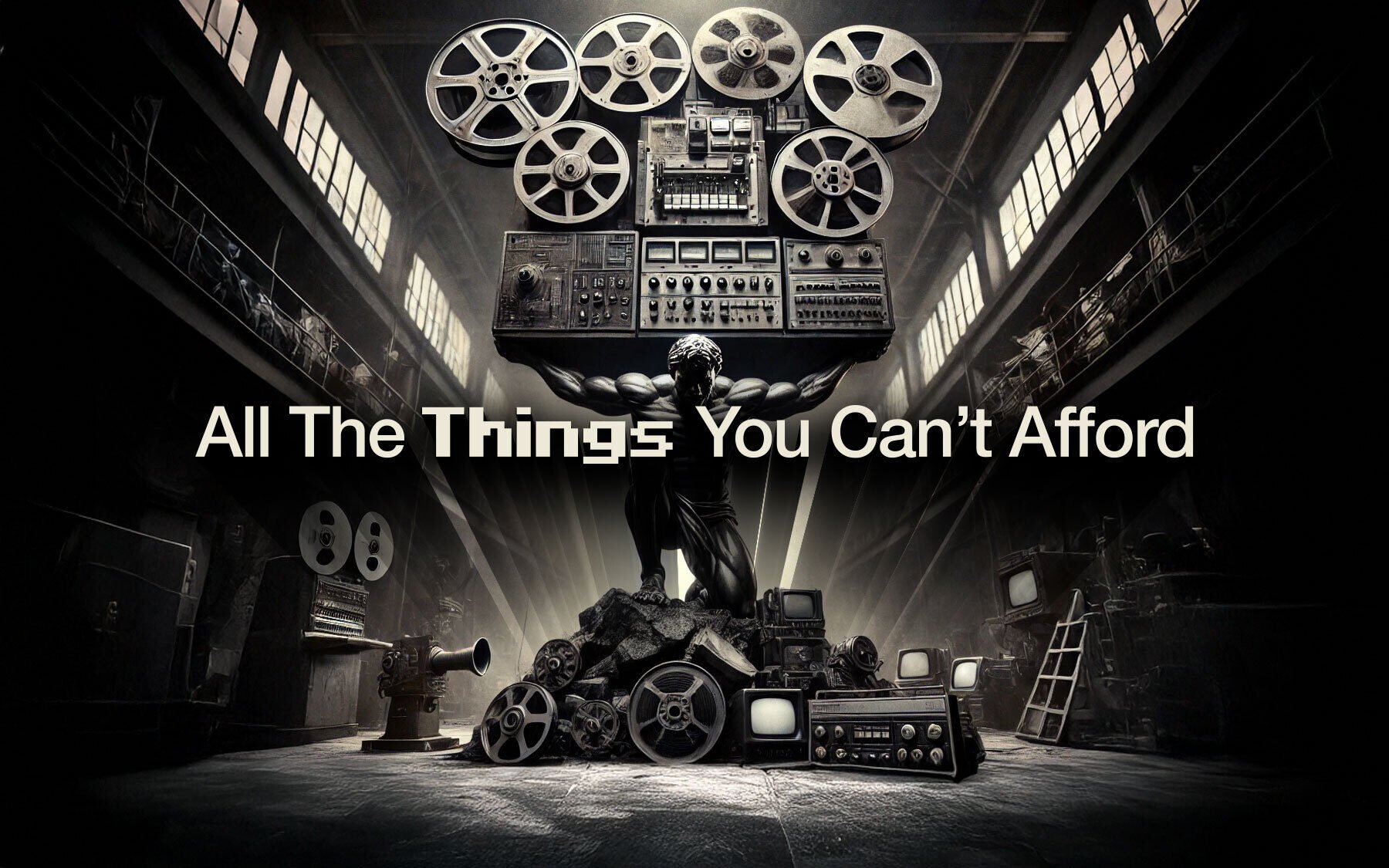16.7%.
That’s it.
16.7% of the 1175 companies exhibiting at NAB 2024 listed themselves in the show floor directory as providing AI/Machine Learning products or services. We know this because Josh Stinehour from Devoncroft Partners took the time to count them. He was expecting, as would probably anyone else, that the number would be much higher, if not pushing 100% in some categories. But no - 16.7%.
WHAT? I had all my chips on AI!
Well. Like hips, the numbers don’t lie. The interesting question is why, and what they mean. And the even more interesting question: if this show wasn‘t about AI, what in the world was it all about? There at least, I think we can attempt an answer - but let’s start at the other end.
Ante up!
It’s not like there was no AI at the show. There was some headline news from some headline names around new AI and Gen AI feature sets and integrations. But clearly - as a group - vendors chose to promote themselves differently. This may be out of fear of being labeled an “AI company,” a moniker that currently struggles in an epic Van Damme-style split between “Dot Com Bubble” and “Unicorn Money Machine”. It may also be out of fear of being caught out AI-washing - a new term akin to cloud-washing where any integration with ChatGPT, however small, allows a company to self-proclaim “leadership in the field of AI”. There may be another clue in a recent Pew Research Center finding that only about 2% of Americans put trust in information about the upcoming election that comes from ChatGPT. And with trust such a pivotal and increasingly scarce resource for media organizations today, it’s little wonder that there is some hesitancy in being seen as married to AI.
Finally, it may be that everyone expected everyone to talk about AI, so to stand out, they didn’t. Which makes a weird kind of sense.
While all these are surely contributing factors, it is more likely that the number reflects the reality of AI technological maturity in the field. Current, relevant AI in media and entertainment is still a supporting act and not the headline number. It generates real value when leveraged in a real workflow, not when AI is added for AI's sake. That is why we saw interest in the use of AI to translate, transcribe, describe, speed up, label, adjust, search and automate – but not to replace. For those companies who have integrated it well, it is a value-added, as we will discuss below.

High rollers, double down
So if vendors didn’t talk about AI, what did they promote? And - much more importantly - what did the media and entertainment industry, the content creator companies, want to talk about? It can really be summed up in two words:
Automation and efficiency.
At Fonn Group we had back-to-back meetings all day every day at the show with every major media organization in the US and many from all over the world. And what every single one of them brought up, was efficiency. They wanted to know how - in renewing and modernizing their media workflows as so many of them currently are - can they be more efficient? They talked, we listened, we discussed - and here is, if not a summary, then a big picture. What is staggering is how similar the conversations all were. They were about time.

Go all in
The common goal of every media organization we talked to was not to become efficient for the sake of it, nor to necessarily run cheaper, or do less. No - the goal was to free as much time for resources as possible to produce as much content as possible. In the face of a tsunami of mediocre content fuelled by GenAI, a veritable plethora of small and micro producers gaining niche audiences, 1,500 FAST channels in the US alone and a number of other developments, the producers of original, quality content out there are fighting on multiple fronts to keep viewers engaged. The only real solution is to do more of what they do best; create content. The best way to do this is to remove bottlenecks and tasks that can be automated, so that you can let your people produce without friction, and put some of those resources used for repetitive, automate-away-able tasks to content production instead.

Hit a hot streak
Content should run through an organization like a hot poker through cheese. From the perspective of asset flow, some stop points should not exist, and some tasks should be automated, workflowed and engineered away. Consider the following - all of our customer conversations did:
- Should there be a queue to ingest material? Should only a few individuals be able to do this? Or should the task belong to everyone and anyone have access to do it?
- Should an editor need to spend time finding material in the archive in a different way and in a different system than he finds recent content? Or should everything be available to them, instantly and in the same interface?
- Should there ever be a need to request a regular graphic? Or should it all be templated and ready to use?
- Should external content contributors deliver a file on disk? By email? From a physical media manager desk? To one person on the recipient end? Or should they be sent a link to a dedicated upload portal and drag and drop their content, instantly available to everyone in the organization?
- Should you work in content silos? Or should everyone, everywhere have access to everything?
- Should only highly skilled editors be able to assemble simple sequences for stories? Or should everyone be able to do this, and the elite editors be used for elite tasks?

Play the wild card
And this is where we get back to AI - not as a buzzword but as a real, tangible piece of technology that can be used to remove, speed up or enhance a number of tasks. Knowing what we know about AI now - what it can do well today, we have to ask ourselves a few more questions!
- Does manual tagging of material make sense? Should a content producer spend time meticulously tagging and filling out metadata fields? Or should these tasks be assisted by AI - filling out much more metadata than a human could hope to?
- Should simple audio ducking require the involvement and time of a highly skilled editor? Or should a simple workflow involving some AI and a lot of common sense automate this for 90% of all clips?
- Should subtitling and translation services involve the use, delay and cost of an external agency? Or should the highly accurate, fast language AI services today be used for 80% of the cases, able to deliver in seconds instead of hours?
- Should finding material be hard? And take time? And require you to already know what you are looking for and where it is? Or should searching for assets be fast, easy and inspiring, offering you results that are not just correct, but more than you set out to find?

The House Always Wins. So Play Pokémon.
So. At NAB 2024, Buzz Vegas delivered on AI. There was plenty to experience for those wanting a fully immersed a(i)valanche of cool features, POCs and previews showing new things nobody quite knows what to do with yet. However, for the media producers of the world, that was not the focus. Efficiency was. And efficiency is not boring, it’s beautiful. Playing the efficiency game now and playing it well, implementing efficient, cloud-native, scalable solutions with easy to control costs and the capability to revolutionize your workflow; these things will let you play a whole different game while everyone else is losing to the house. We are talking about efficiency in the true sense of the word. And that means more speed, less cost, less friction, fewer bottlenecks – and at the other end: more content.





